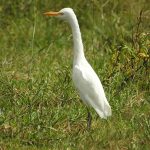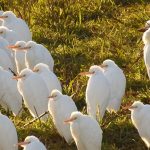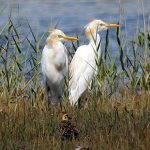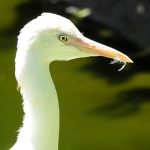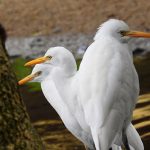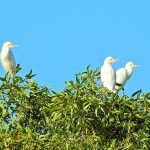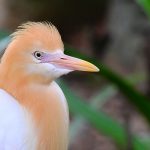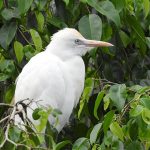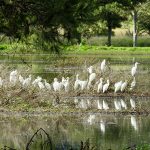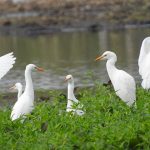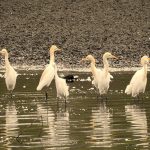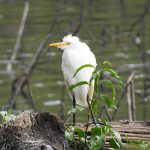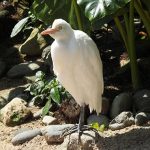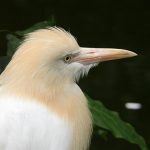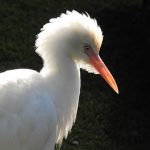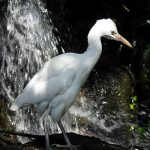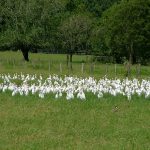CATTLE EGRET
Cattle Egrets are small, snowy-white plumage with a compact appearance. During the breeding season, they develop beautiful orange-buff plumes on their head, neck, and back. They have a yellow bill and legs, which can help distinguish them from other egret species.
Cattle Egrets can be found in a wide range of habitats. They are often seen near wetlands, swamps, and rivers, but they are particularly well-known for their association with cattle and other large herbivores. They often forage in grassy fields alongside these animals, feeding on insects and other small prey disturbed by the grazing.
Cattle Egrets are highly adaptable foragers. They are known for their cooperative feeding behavior, where they often follow cattle, horses, or other large mammals to catch insects stirred up by their movement. This symbiotic relationship benefits both the egrets and the animals, as the birds get a source of food, and the livestock have insects removed from their bodies.
Cattle Egrets in Australia typically breed during the wet season. They build compact nests in trees or shrubs near water sources. These nests are made from sticks and other plant material. Breeding colonies can be quite large, with numerous pairs of birds nesting together.
While some Cattle Egrets are sedentary and remain in the same region year-round, others undertake seasonal migrations. They may move to different parts of the continent in response to changing weather conditions and food availability.
Cattle Egrets have developed several unique behaviors to maximize their foraging success. They are known to “ride” on the backs of large mammals like cattle, where they can snatch insects disturbed by the animals’ movement. This behavior is sometimes referred to as “riding the gravy train.”
For wildlife enthusiasts and birdwatchers, Cattle Egrets can be easily observed in the northern parts of Australia, especially during the wet season when they are actively breeding and foraging. Look for them near cattle or other large grazers and around wetland areas.
Remember that observing wildlife should always be done with care and respect for the animals and their habitats. It’s also essential to follow local regulations and guidelines when birdwatching or engaging in any wildlife-related activities.

